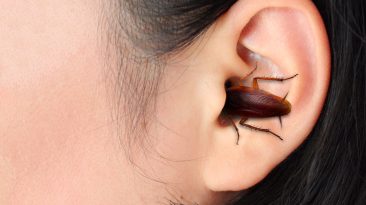What do you get when you take an alien parasite and smush it together with a human being? Would you get to become a supercharged, head-eating anti-hero like Venom? Or would you die a slow and painful death?
Uhhh, I never thought I’d say this, but I think I’d prefer to be the guy who eats people’s heads off. Today, you’re getting infected with your very own alien parasite.
How would it mess with your brain? Would you lose control of your body? And what’s it like to share a body with venom?
With the release of Venom: Let There Be Carnage, we’ve been thinking nonstop about symbiotes. But before we infect you with a parasite from outer space, let’s introduce you to your body’s new roommate.
Venom is a sentient, amorphous alien parasite called a symbiote. Symbiotes infect and hijack their host’s bodies, taking on portions of their host’s personality. For example, you throw one on a friendly neighborhood Spider-Man, you get an edgy web-slinger. If you do the same to a serial killer, you’re gonna get something like Carnage. Thankfully, the relationship between Venom and his human host Eddie Brock is more akin to an old married couple. A very dangerous old married couple. But you? We’re not sure you’ll be so lucky.
First, the symbiote would make its way into your brain. Ugh, what would Venom do up there? Well, we may find our answer in a parasite that didn’t come from outer space, but from – cat poop.
Toxoplasma gondii, aka the feline parasite, is a microscopic neurological parasite known for altering the behavior of sheep, goats, pigs, cows, rats and … well yeah, cats.
While in the stomach of their carrier host, the itty bitty parasite eggs called oocytes morph into very dangerous microbes called tachyzoites. Next, the parasite starts setting up shop in your body and makes a move on your brain.
Studies have shown that rats infected with T. gondii have their brains so rewired by the parasite that it causes them to get a little “frisky” when they smell cats. Which as you can guess, goes about as well as trying to get a smooch from Carnage.
And if that wasn’t freaky enough, did you know that this parasite may have already infected 30% of the human population, including 60 million Americans?
Ever since the start of the twentieth century when we started getting into cats as pets, as the number of domesticated kitties grew, so did cases of schizophrenia. Researchers have linked this spike to an increase in the presence of T. gondii in humans.
Well, your parasite didn’t want to be buddies like Venom. It wants to use you as food. Kind of like the cordyceps fungus. You know, that super-disturbing zombie ant fungi?
When the cordyceps fungus takes over an ant, it forces that little worker to bite down on a leaf and stay put until it dies. In the meantime, the parasite feeds off the ant for three weeks, growing out of the ant’s head and creating more infectious spores.
This wouldn’t look good for you either. With your infection, the parasite would know that you’re smarter than some blue-collar worker ant. Meaning it wouldn’t try to take over your nervous system. Instead, it would go right to taking control of your muscles. All while you helplessly watch.
So it seems sharing your body with a parasite isn’t quite like the comic book adventure Venom makes it out to be. And if it’s anything like the Loa loa eye worm, it sounds terrifying.
Measuring up to 10 mm (0.39 in) in length, the eye worm can hide away in human tissue anywhere from 10 to 15 years. It also does this cute little thing where it squirms across your eyeball, leaving larva in its wake. If these larvae get close enough to your thinker you could develop brain disease like encephalopathy.
So, if you do find yourself infected with an alien parasite, we’d recommend holding off on starting your life as a superhero, and maybe take a trip to your nearest emergency room instead.
Sources
- “All the Symbiotes in the Venom Universe, Explained”. Dave Gonzales. 2021. Thrillist.
- “Venom’s Most Disgusting Secret Revealed By Marvel”. 2018. Screenrant.
- “Toxoplasma Gondii” parasitesinhumans.org
- “‘Venom’ Parasite Biology, Explained”. 2018. Inverse.



























